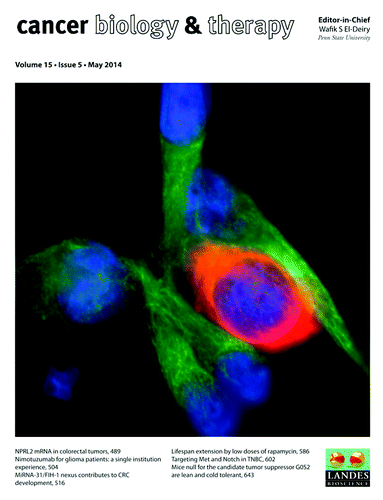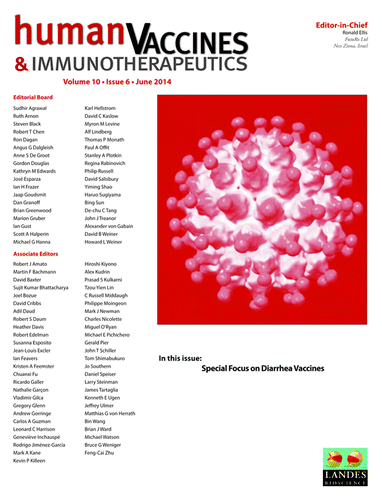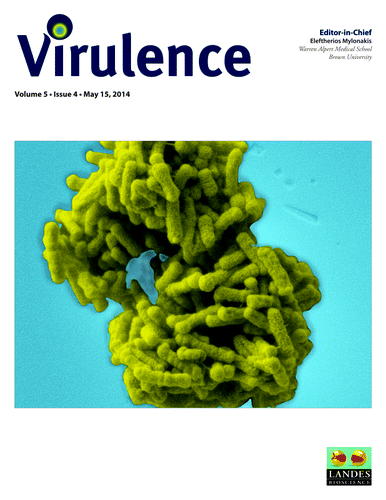E. coli Nissle 1917-derived factors could reduce severity of intestinal mucositis
Mucositis is a debilitating side effect of cancer chemotherapy resulting from mucosal injury to the alimentary tract. Novel treatments are urgently needed which will relieve patients from the side effects of chemotherapy, but not compromise its effectiveness. A promising approach is the use of the probiotic bacterium Escherichia coli Nissle 1917 (EcN), currently studied for its therapeutic potential against various intestinal disorders such as inflammatory bowel disease, ulcerative colitis and gut inflammation in humans. In a recent study, Dr Gordon Howarth and colleagues evaluated the capacity for supernatants derived from EcN to prevent intestinal epithelial cell damage induced by the chemotherapy drug 5-fluorouracil (5-FU). Specifically, effects on intestinal epithelial cell viability, apoptosis, and monolayer permeability were sought. The second aim was to determine if EcN cultured in a range of different growth media resulted in the release of factors that would differentially impact on these parameters. To this end, EcN was cultured under different growth conditions, and the supernatants were tested on non-malignant intestinal epithelial cells (IEC-6) derived from rat ileum, in the presence and absence of 5-FU. Cell viability, apoptotic activity and cell monolayer permeability were measured. The researchers found that 5-FU significantly reduces cell viability. When measured by flow cytometry all EcN supernatants in the presence of 5-FU increased the proportion of viable cells and reduced late-apoptotic cells, compared with 5-FU control. Moreover, all EcN supernatants significantly reduced the disruption of IEC-6 cell barrier function induced by 5-FU, compared with control. From these results, the authors conclude that EcN derived factors could potentially reduce the severity of intestinal mucositis ().Citation1
Vaccines for preventing diarrheal diseases
Infectious agents causing diarrhea are present or are sporadically introduced worldwide. While diarrhea is a rare occurrence in most people living in developed countries, it is a major problem in less developed countries, where sanitation, access to clean water, and personal and domestic hygiene are not always given. Globally, diarrheal disease is the second leading cause of death in children under 5 years of age. A significant proportion of cases of diarrheal disease may be prevented through safe drinking water and adequate sanitation and hygiene. In addition there are efforts to develop vaccines against many microorganisms causing diarrhea. A series of Special Focus (SF) reviews and original research papers in the journal Human Vaccines & Immunotherapeutics cover the most important aspects of diarrhea vaccines development, including vaccines against rotavirus (Yen, p) and norovirus (Tan, p), oral cholera vaccines (Desai, p), vaccines against Clostridium difficile (Leuzzi, p), vaccines against invasive Salmonella disease (MacLennan, p) and the evaluation of a polysaccharide conjugated Salmonella enterica serovar Paratyphi candidate vaccine (Ali, p). Furthermore, this SF offers reviews on Campylobacter jejuni vaccines (Maue, p), immunotherapy and vaccines against Cryptosporidium (Mead, p), vaccine development against Entamoeba histolytica (Quach, p), and vaccines against several diarrheal pathogens (Hensel, p). One study investigates resistance to reinfection as a mouse model for giardiasis (Li, p). In the area of epidemiology, there is an analysis of the burden of acute gastroenteritis, norovirus and rotavirus in a managed care population (Karve, p). Finally, at the market level, reviews on commercializing diarrhea vaccines for travellers (López-Gigosos, p), economics and financing of vaccines for diarrheal diseases (Bartsch, p) and economic value of diarrhea vaccines (Rheingans, p) round out this Special Feature ().Citation2
Bacteriophages can be applied for detection of foodborne pathogens
Bacterial contamination of food products presents a challenge for the food industry and poses a high risk for the consumer. Despite increasing awareness and improved hygiene measures, foodborne pathogens, such as Escherichia coli, Salmonella, Campylobacter and Listeria monocytogenes remain a threat for public health, and novel methods for detection of these organisms are needed. Bacteriophages represent ideal tools for diagnostic assays because of their high target cell specificity, inherent signal-amplifying properties, easy and inexpensive production, and robustness. Every stage of the phage lytic multiplication cycle, from the initial recognition of the host cell to the final lysis event, may be harnessed in several ways for the purpose of bacterial detection. Besides intact phage particles, phage-derived affinity molecules such as cell wall binding domains and receptor binding proteins can serve for this purpose. A recent review by Drs Schmelcher and Loessner provides an overview of existing phage-based technologies for detection of foodborne pathogens, and highlights the most recent developments in this field, with particular emphasis on phage-based biosensors ().Citation3
Campylobacter ureolyticus
An emerging gastrointestinal pathogen
The genus Campylobacter incorporates bacteria that are gram-negative, non-spore forming, spiral shaped rods. Bacteria belonging to this genus are a leading cause of zoonotic disease worldwide and are considered foodborne pathogens. Annually, Campylobacter related illness affects approximately 1% of the European population. Symptoms of campylobacteriosis include abdominal cramping, fever and diarrhea, with or without blood in the stools and in most cases the infection is self-limiting. The two predominant causative agents of Campylobacter related infections are C. jejuni and C. coli. However, recent studies have identified another species of Campylobacter that appears to have a much more significant role in human campylobacteriosis than previously realized, namely Campylobacter ureolyticus. In a recent review, Dr Roy Sleator and colleagues summarize the current knowledge of this emerging, gastrointestinal bacterial pathogen. They describe the identification of the pathogen by molecular as opposed to classical culture based diagnostics and discuss candidate reservoirs of infection. The authors also review the available genomic data, outlining some of the major virulence factors, and discuss how these mechanisms likely contribute to the pathogenesis of the organism ().Citation4
Reference
- Wang H, Bastian SE, Cheah KY, Lawrence A, Howarth GS. Escherichia coli Nissle 1917-derived factors reduce cell death and late apoptosis and increase transepithelial electrical resistance in a model of 5-fluorouracil-induced intestinal epithelial cell damage. Cancer Biol Ther 2014; 15:560 - 9; http://dx.doi.org/10.4161/cbt.28159; PMID: 24556751
Reference
- López-Gigosos R, Segura-Moreno M, Díez-Díaz R, Plaza E, Mariscal A. Commercializing diarrhea vaccines for travelers. Hum Vaccin Immunother 2014; 10; http://dx.doi.org/10.4161/hv.27737; PMID: 24496054
Reference
- Schmelcher M, Loessner MJ. Application of bacteriophages for detection of foodborne pathogens. Bacteriophage 2014; 4:e28137; http://dx.doi.org/10.4161/bact.28137; PMID: 24533229
Reference
- O’Donovan D, Corcoran GD, Lucey B, Sleator RD. Campylobacter ureolyticus: a portrait of the pathogen. Virulence 2014; 5:498 - 506; http://dx.doi.org/10.4161/viru.28776; PMID: 24717836




